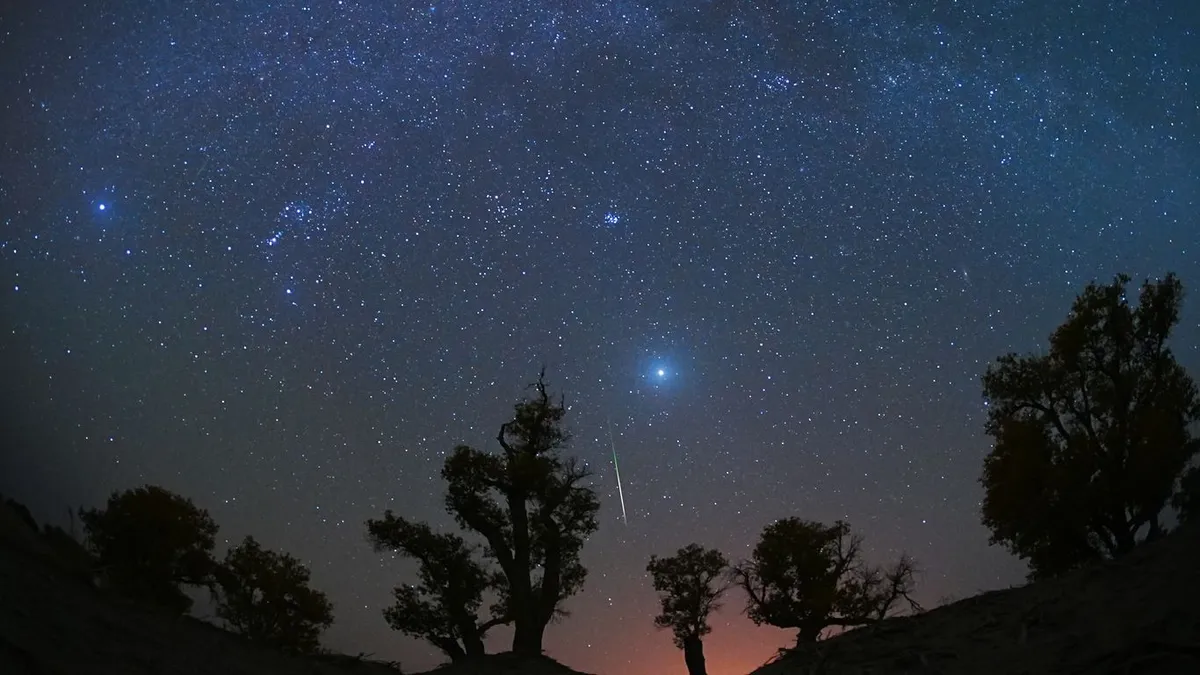
The Orionid meteor shower is poised to dazzle stargazers with one of the most spectacular celestial displays of the year. As it reaches its peak this Thursday, observers can expect to witness streaking meteors and fireballs illuminating the night sky, according to NASA. This annual event occurs when Earth traverses the debris stream left by Halley's Comet, with the Orionids active from October 2 to November 7, 2025, peaking this week as noted by the American Meteor Society.
To fully experience the beauty of the Orionid meteor shower, NASA recommends finding a location that is well away from the bright lights of cities or streets. Prepare yourself with a sleeping bag, blanket, or comfortable lawn chair. If you are in the Northern Hemisphere, lie flat on your back with your feet pointing southeast; if you are in the Southern Hemisphere, face northeast. This position allows you to take in as much of the sky as possible, enhancing your viewing experience.
Fun fact: Your eyes will begin to adjust to the darkness after spending less than 30 minutes away from artificial light, allowing you to see the meteors more clearly.
The peak viewing night for the Orionid meteor shower is from Wednesday into Thursday, according to NASA. The prime time for observation is between midnight and dawn. During these hours, the visibility of the meteors is at its best, providing an excellent opportunity for enthusiasts to enjoy the captivating display.
In rural, dark areas, observers could witness up to 20 swift Orionid meteors per hour, as reported by the American Meteor Society. This year, viewing conditions are particularly favorable due to Tuesday's new Moon, which promises dark skies free from lunar interference during the early morning hours. If the weather is cloudy on the peak night, don't despair; Orionid activity remains strong for nearly a week, providing ample opportunities for viewing on subsequent mornings.
The Orionid meteors are renowned for their impressive brightness and remarkable speed, travelling at approximately 41 miles per second as they enter Earth's atmosphere. Notably, fast meteors can leave glowing "trains"—incandescent trails of debris that linger for several seconds to minutes. Additionally, these meteors can sometimes transform into fireballs, producing prolonged bursts of light that are particularly striking during the Orionid meteor shower.
These meteors are framed by some of the brightest stars in the night sky, creating a stunning backdrop that enhances their visual appeal.
As the Orionid meteor shower captivates skywatchers, it serves as a reminder of the wonders of our universe. So grab your friends and family, find a dark spot, and enjoy this celestial spectacle. For additional insights into astronomical events, stay tuned for updates on future occurrences, like the potential asteroid impact in 2032—there's no need to panic just yet!